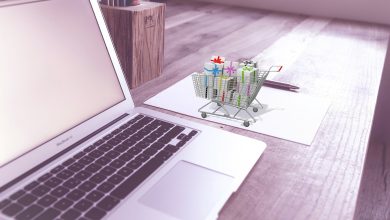
The consumer packaged goods (CPG) industry is undergoing a transformation, driven by advancements in artificial intelligence. AI-powered tools are enabling companies to analyze vast amounts of data with unprecedented accuracy, uncovering valuable insights into consumer behavior, market trends, and product performance. How can businesses leverage these capabilities to gain a competitive edge and make smarter decisions?
Let’s explore how AI is revolutionizing CPG insights through advanced data reports.
The Power of Data in the CPG Industry
Data is the backbone of the CPG industry, shaping decisions in product development, marketing, and supply chain optimization. Among its many applications, AI-driven food reports have become a game-changer, offering deep insights into consumer preferences, dietary trends, and purchasing behaviors.
These reports enable businesses to uncover market gaps, develop innovative products, and fine-tune their offerings to meet the ever-changing needs of their customers. When paired with AI-powered analytics, food reports transform raw data into actionable insights, helping companies stay ahead in a fiercely competitive market.

AI-Driven Food Reports: A Closer Look
AI-driven food reports use advanced algorithms to analyze vast amounts of data, from social media posts and online reviews to sales figures and consumer surveys. By leveraging natural language processing and machine learning techniques, these tools can decipher complex patterns in consumer behavior, identify emerging trends, and predict future market demand.
This provides businesses, including CPG marketing agencies, with a comprehensive understanding of their target audience’s preferences, helping them tailor their products to meet customer expectations and stay ahead in a constantly evolving market.
The Benefits of AI-Powered Data Analysis
The integration of AI-powered data analysis into CPG insights offers numerous benefits for businesses:
Improved Accuracy
With the ability to analyze large datasets and detect patterns that humans may overlook, AI-driven analytics provide more accurate insights.
Real-Time Insights
By continuously monitoring consumer behavior, AI-powered tools offer real-time insights that can help businesses make timely decisions and adapt to market changes quickly.
Cost Savings
With the ability to analyze data at a faster rate than humans, AI-powered analytics save time and resources for businesses.
Competitive Advantage
By staying ahead of emerging trends and understanding customer preferences, companies gain a competitive advantage in a crowded market.
Data in the CPG Industry – Challenges and Opportunities
While AI-driven food reports offer valuable insights, traditional data collection methods in the CPG industry still present challenges. These include:
Limited Scope
Traditional data collection methods often focus on sales figures and consumer surveys, providing a limited view of consumer behavior.
Time-Consuming
Manual data collection is time-consuming and can delay decision-making processes.
Costly
Hiring data analysts to manually analyze large datasets can be costly for businesses, especially with the increasing reliance on big data in the CPG industry.
Inaccurate or Outdated Data
With traditional data collection methods, there is a risk of inaccurate or outdated data, leading to faulty insights and incorrect decision-making.
To overcome these challenges, businesses can leverage AI-powered analytics to complement traditional data collection methods. By combining the power of human expertise with advanced machine learning algorithms, companies can gain comprehensive and accurate insights into consumer behavior.
Examples of Companies using AI-driven Analytics
- Nestlé – The global food and beverage company uses AI to analyze customer feedback and social media data, allowing them to identify consumer trends and tailor their products accordingly.
- PepsiCo – This multinational corporation uses AI-powered analytics to track online conversations about its brands and competitors, gaining valuable insights into consumer preferences and market gaps.
- Unilever – By analyzing millions of images on social media platforms, Unilever utilizes AI to understand consumer behavior and create targeted marketing campaigns for their personal care products.
- The Kraft Heinz Company – This CPG giant leverages AI-driven food reports to gain real-time insights into consumer preferences and optimize its product portfolio accordingly.
- Coca-Cola – By utilizing AI-powered analytics, Coca-Cola analyzes customer data from various sources, including social media, to gain a better understanding of its target audience and develop personalized marketing strategies.
Final Thoughts
As technology continues to advance, AI-driven analytics will become increasingly important for businesses of all sizes. From gaining insights into consumer behavior to optimizing marketing strategies and improving overall efficiency, the benefits of incorporating AI-powered analytics are numerous. By harnessing the power of both human expertise and advanced machine learning algorithms, companies can stay ahead of their competition and make data-driven decisions that lead to success.



